Invented By Animals: Jaw-dropping facts that everyone should know
Published on: 11 November 2021
Invented By Animals by Christiane Dorion and Gosia Herba has been nominated for Best Book with Facts at the Blue Peter Book Awards!
Here, get a sneak peek at some of the incredible creatures who have inspired our technology...
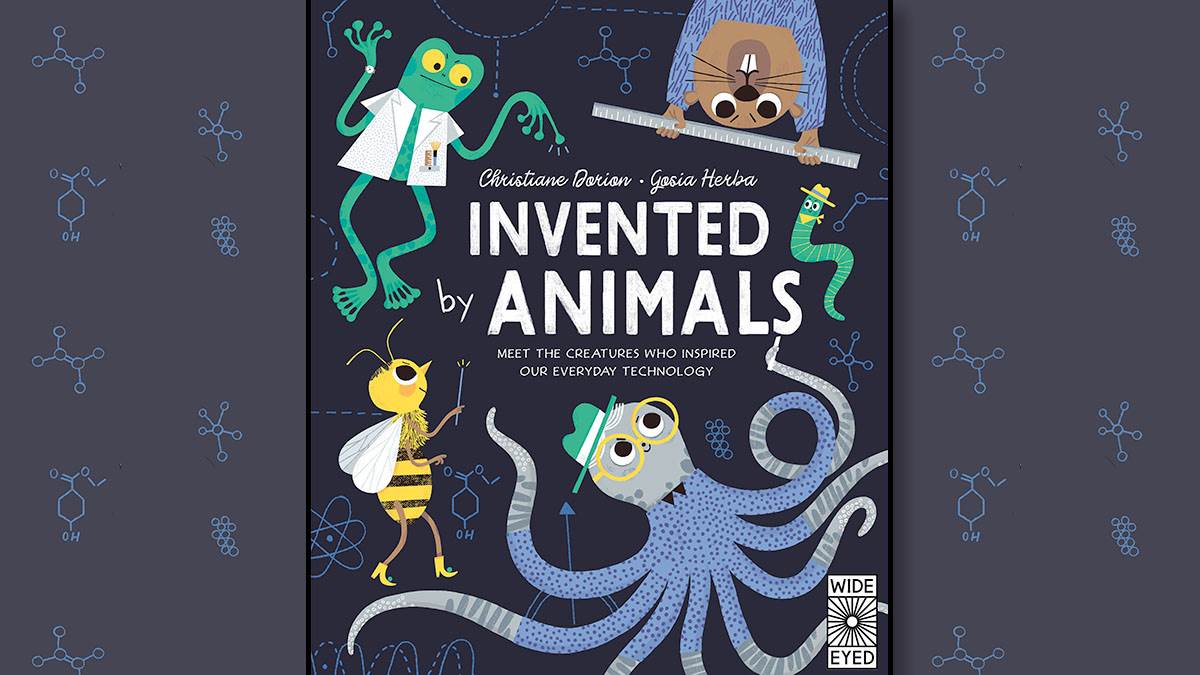
Shark
Known for their hunting prowess, muscular body and sharp teeth, sharks are sleek and speedy swimmers! But how do they swim so fast?
While the shark's skin may look as soft as silk, it is actually as rough as sandpaper. Covered in tiny scales with little grooves and channels, the shark's special skin helps water flow along its body and reduces drag, allowing it to swim faster.
The shark's skin is so amazing that it has inspired clever inventions such as high-tech swimsuits, which made a real splash at the 2000 Olympic Games by helping athletes to swim even faster!
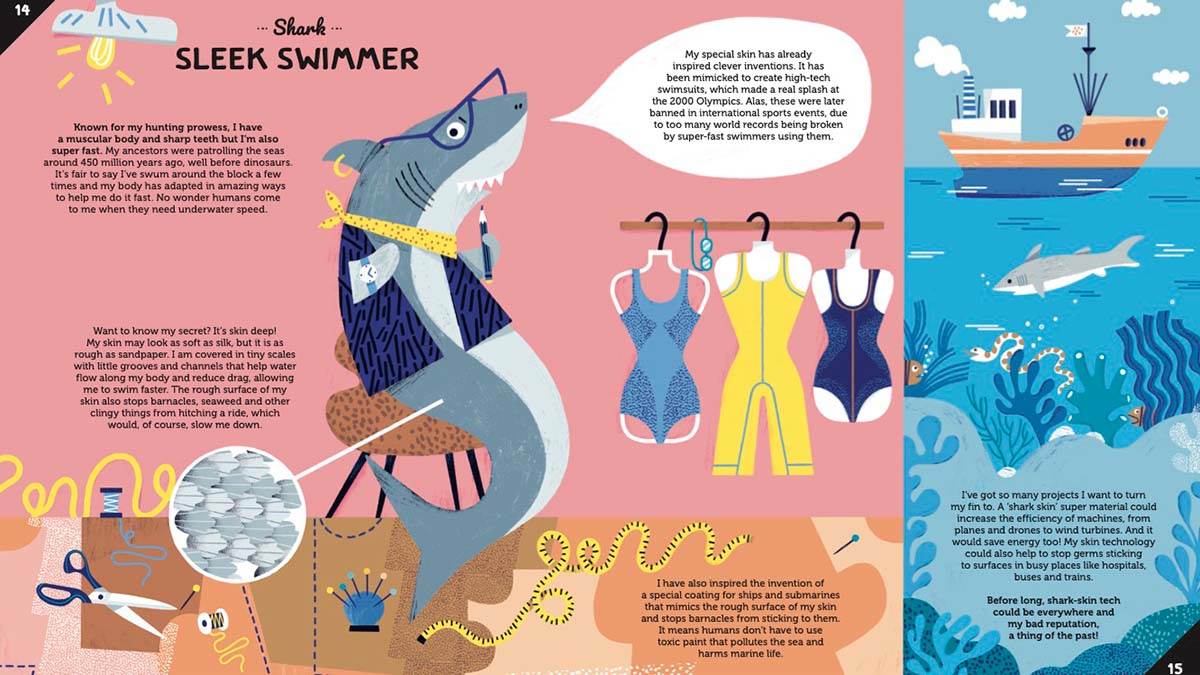
Kingfisher
Have you ever noticed the unique shape of the kingfisher's beak? Not only is it perfectly formed for plunging into water at top speed without making a splash, but it also helped to improve the shape of the super-speedy bullet train!
The bullet train was too loud, especially when blasting out of tunnels. Inspired by the bird's splashless dive, the front of the train was redesigned to mimic its long, pointy beak. No more BOOM!
Earwig
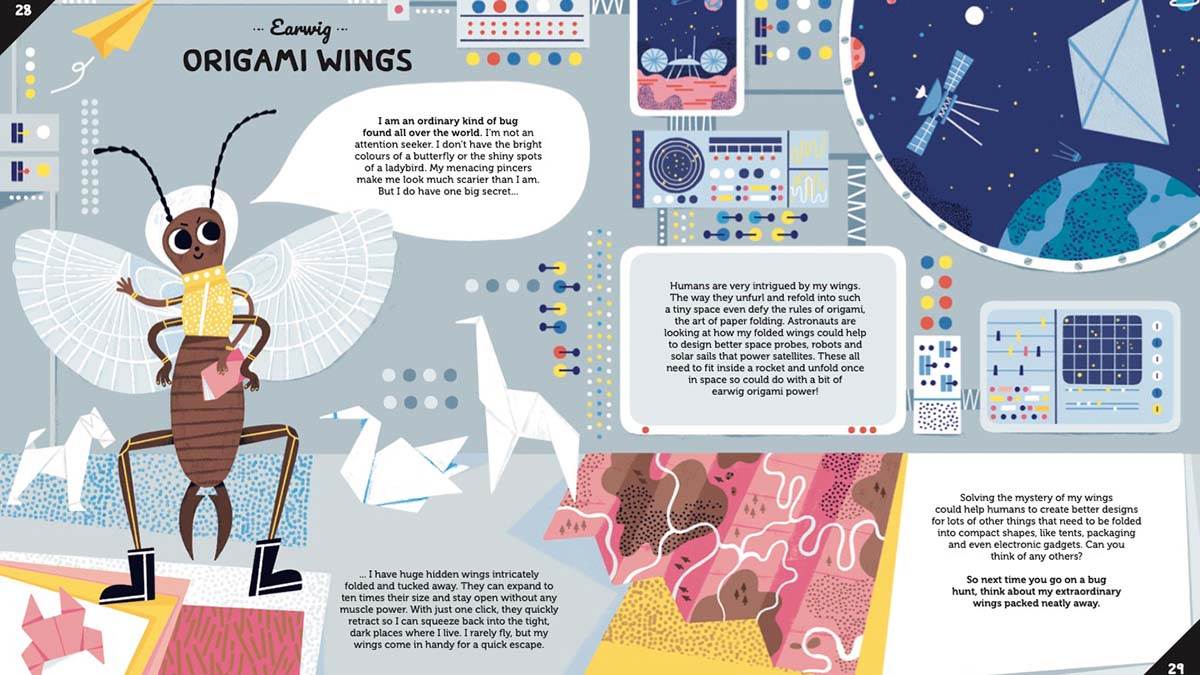
The earwig may look like an ordinary kind of bug with no extravagant beauty or clear skill seen to the human eye, but all is not as it seems...
This little insect has huge hidden wings that are intricately folded and tucked away. They can expand to ten times their size and stay open without any muscle power at all!
Astronauts are very intrigued by these magnificent wings that defy the rules of origami. They are looking at how they unfurl and refold into such a tiny space to design better space probes, robots, and solar sails that power satellites. Who would have thought that the earwig could help space exploration?
Porcupine

While the porcupine's wild spiky hairdo may seem a bit peculiar at first, the long, sharp quills are inspiring cutting-edge medical inventions.
The porcupine's quills are used to warn off predators. With tiny hook-like barbs on their tips, they can pierce skin easily but they are hard to remove. This has given scientists a good idea: staples used to close wounds after surgery could be redesigned like porcupine quills to speed up healing and dissolve naturally so there would be no need to pull them out.
Namib Beetle
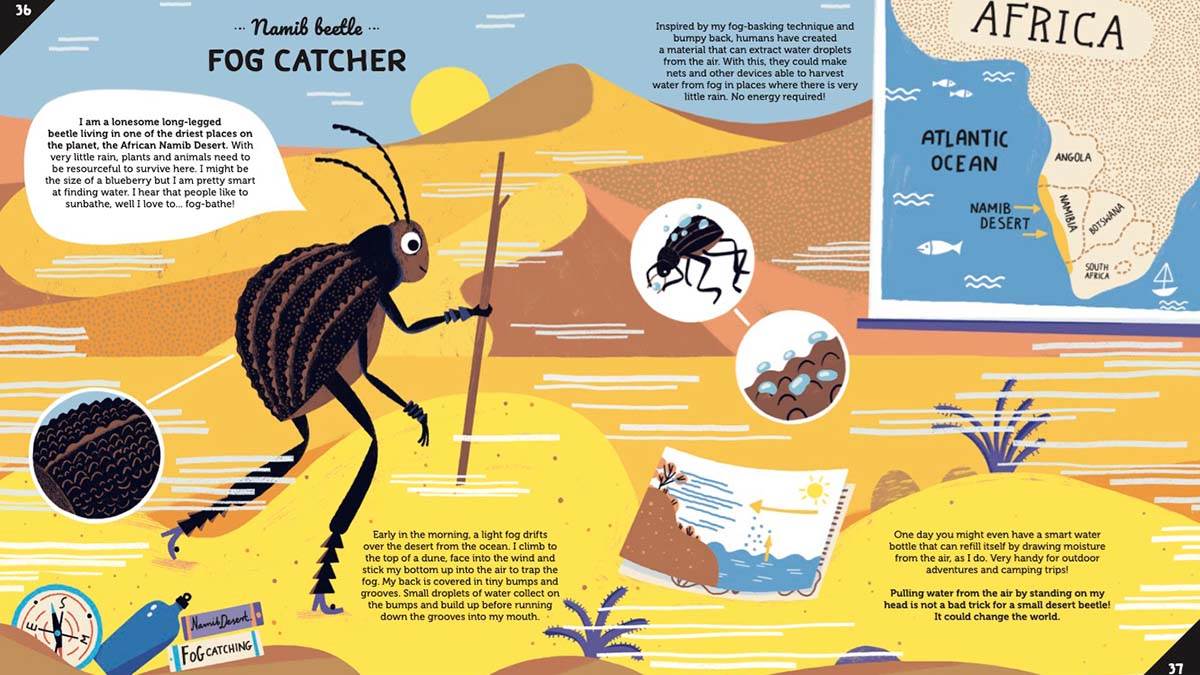
The Namib beetle lives in one of the driest places on the planet - the African Namib Desert. With little rain, it needs to be resourceful and smart to survive. So how exactly does it keep going? The answer is fog-bathing!
Early in the morning, the beetle climbs to the top of the dune and sticks its bottom into the air to trap the fog to drink - it's clever, unique, and effective. Thanks to the Namib beetle, we have invented clever devices that can harvest water from fog in the driest places!
Mimic octopus
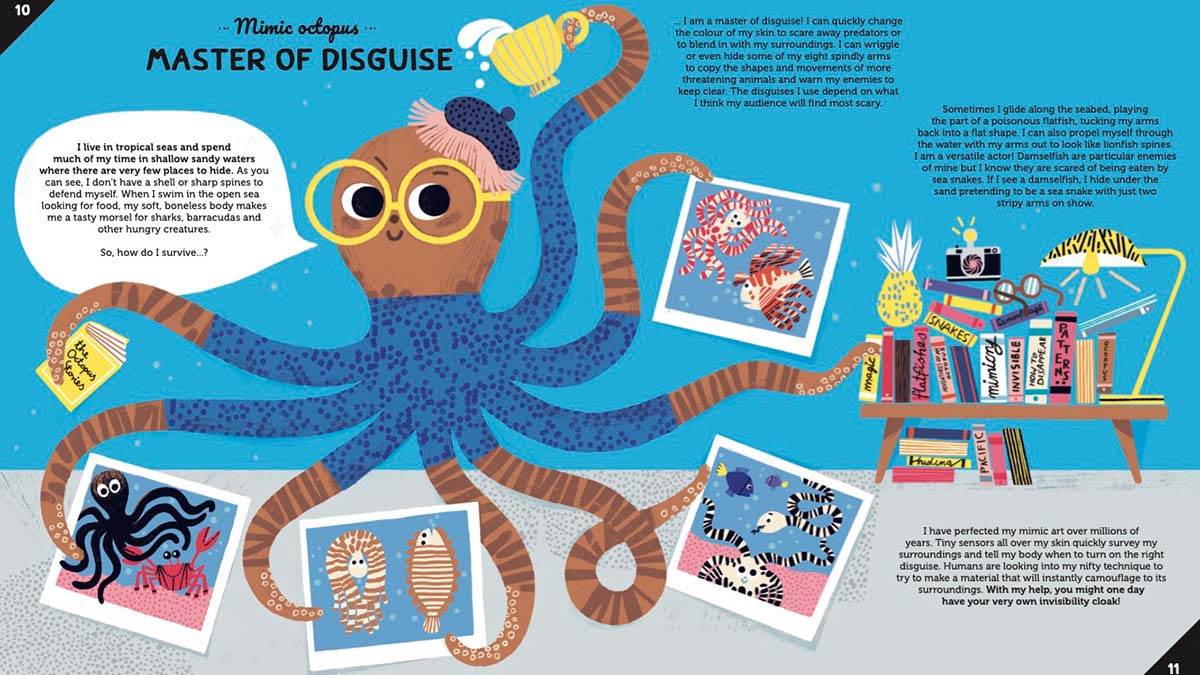
Living in the tropical seas and shallow sandy waters where there are few places to hide, octopuses regularly find themselves vulnerable to big scary sharks and other hungry creatures of the sea.
But did you know that octopuses are masters of disguise? They can quickly change colour to blend in with their surroundings.
Even more impressively, the mimic octopus can also wriggle its eight spindly arms to copy the shapes and movements of more threatening animals, warning its enemies to KEEP CLEAR. Its nifty technique could help us to make a material that can camouflage itself like an invisibility cloak!
Topics: Non-fiction, Blue Peter Book Awards, Animals, Science, Features




